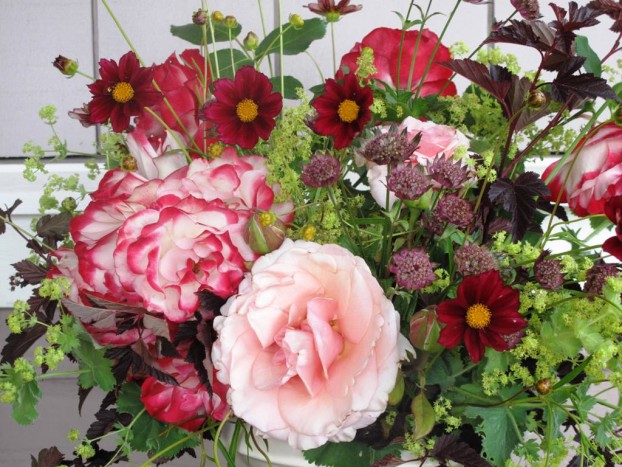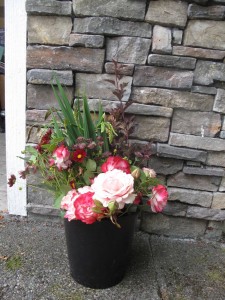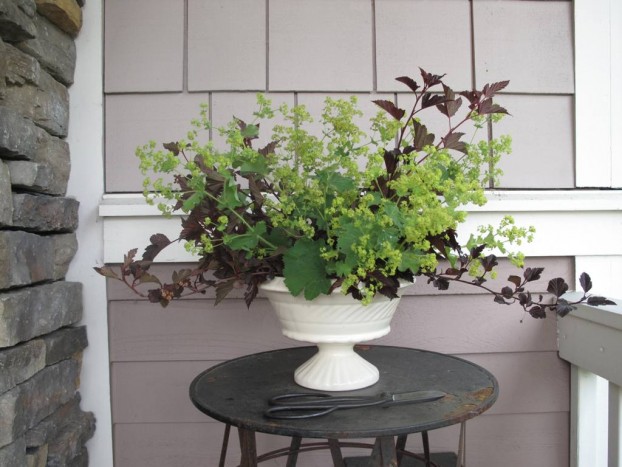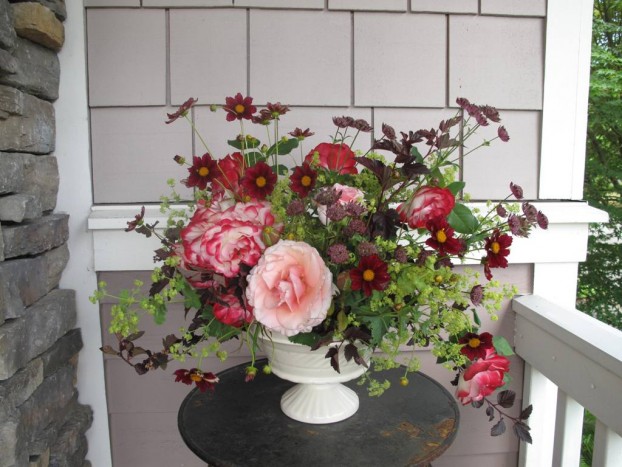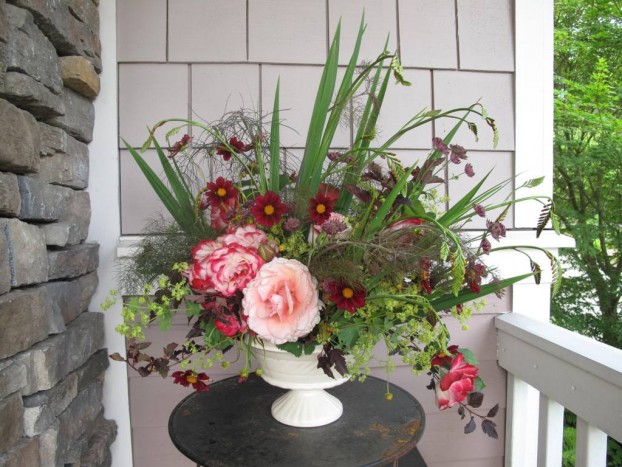Week 24 // Slow Flowers Challenge
June 21st, 2015
Greetings and here’s to SUMMER’S arrival today, June 21st! I couldn’t be more inspired to celebrate the Solstice than to take a walk in the garden. I clipped each stem for today’s Slow Flowers Challenge from my Seattle yard this morning and spent a glorious (and blissfully meditative) hour or so arranging.
And since it’s Father’s Day, I’m using the arrangement for tonight’s dinner we’re preparing for Bruce, my husband and the father of our two boys.
I’ve always loved pairing lime and wine colors together, in garden borders and beds, as well as in container gardens. No surprise that the deep burgundy Ninebark (Physocarpus opulifolius ‘Diabolo’) looks terrific with the acid green Lady’s Mantle ( Alchemilla mollis). Stems from those two create the textural and high-contrast foundation for this design.
By the way, this is a vintage Haeger American-made vessel, a creamy ivory piece that I brought home with me from a trip to Iowa a few years ago. I love the proportions – perfect for a centerpiece. (Here’s a similar one on Etsy – they’re not too difficult to find.)
To create this design, I placed a large cage-style metal flower frog (also vintage) in the bottom of the bowl. The grid has 5/8-inch openings, ideal for a combination of woody and herbaceous stems as I’m using here.
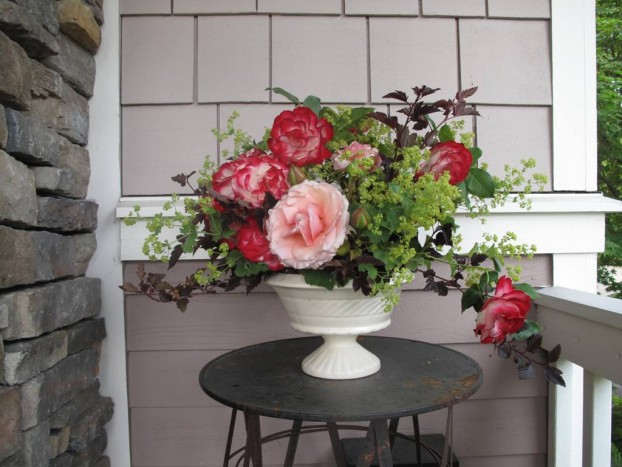
Steps three and four: Adding garden roses, a sweet pairing of a peachy-pink rose with a bicolored white-ruby rose. I inherited these two unknown roses when we moved to this garden four years ago.
After I added the roses, I wanted to take advantage of some wispy pieces to bring a playful dimension to the design. I incorporated a beautiful, mauve-colored Astrantia and several stems of a burgundy-petaled tickseed with great yellow centers ( Coreopsis sp.).
Two final and rather unexpected touches utilize other garden stalwarts: Crocosmia in bud – love the strong lines of it at this stage; and bronze fennel. Now some may argue that bronze fennel is a garden thug, and it is. But the flouncy, lacy texture is pretty fantastic in an arrangement, so I always allow a few stems of it to remain after weeding out the volunteers.









